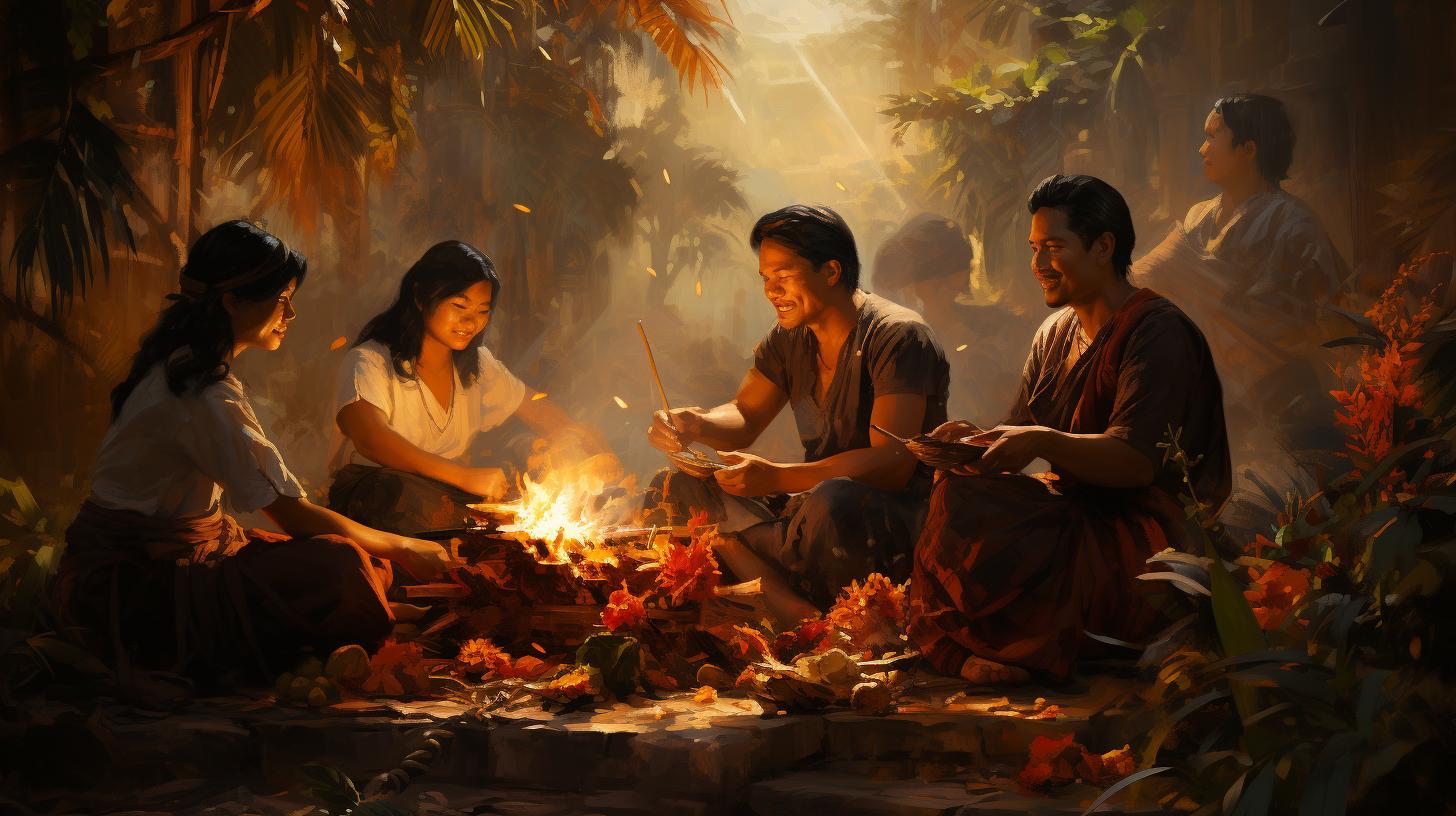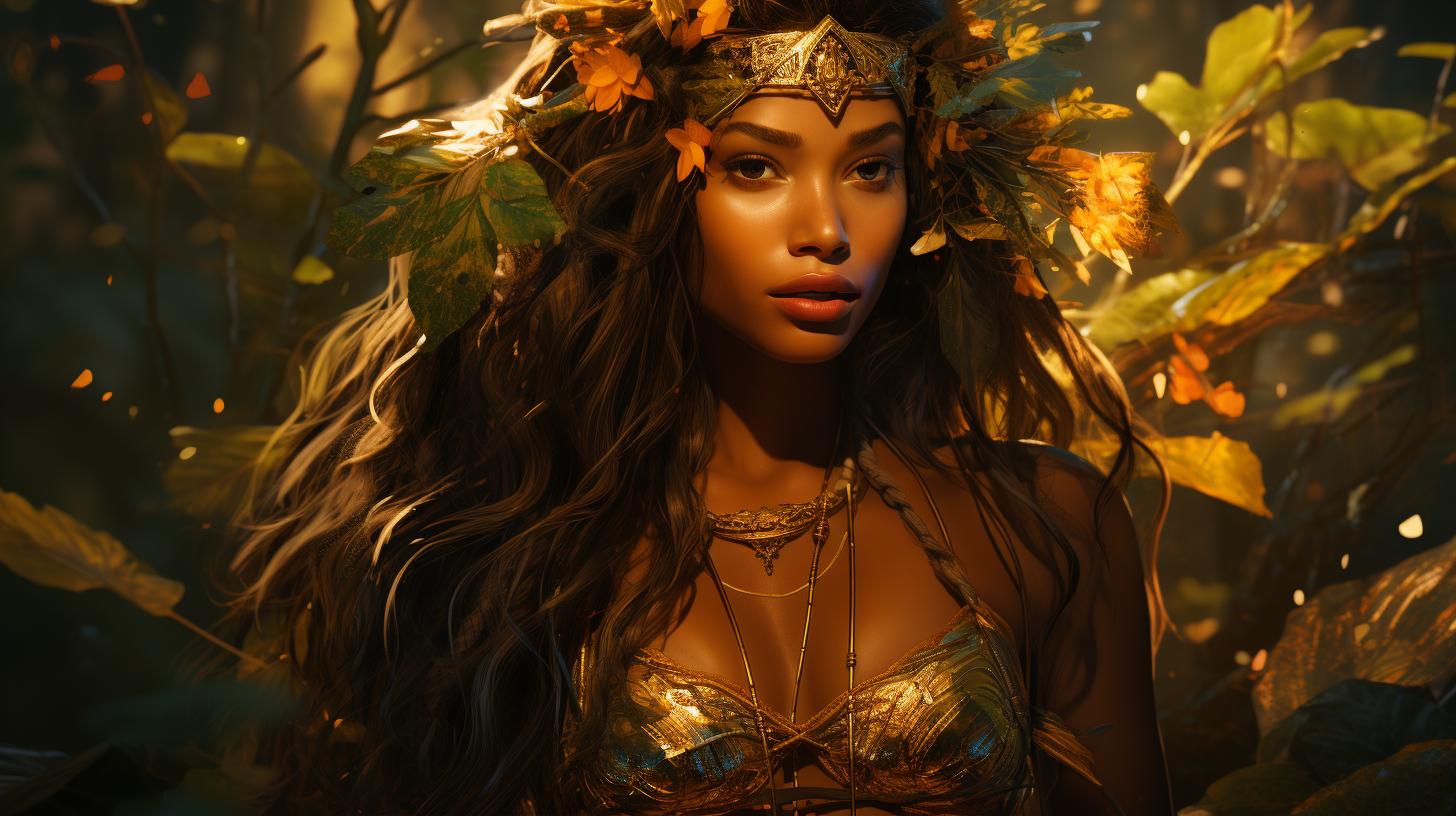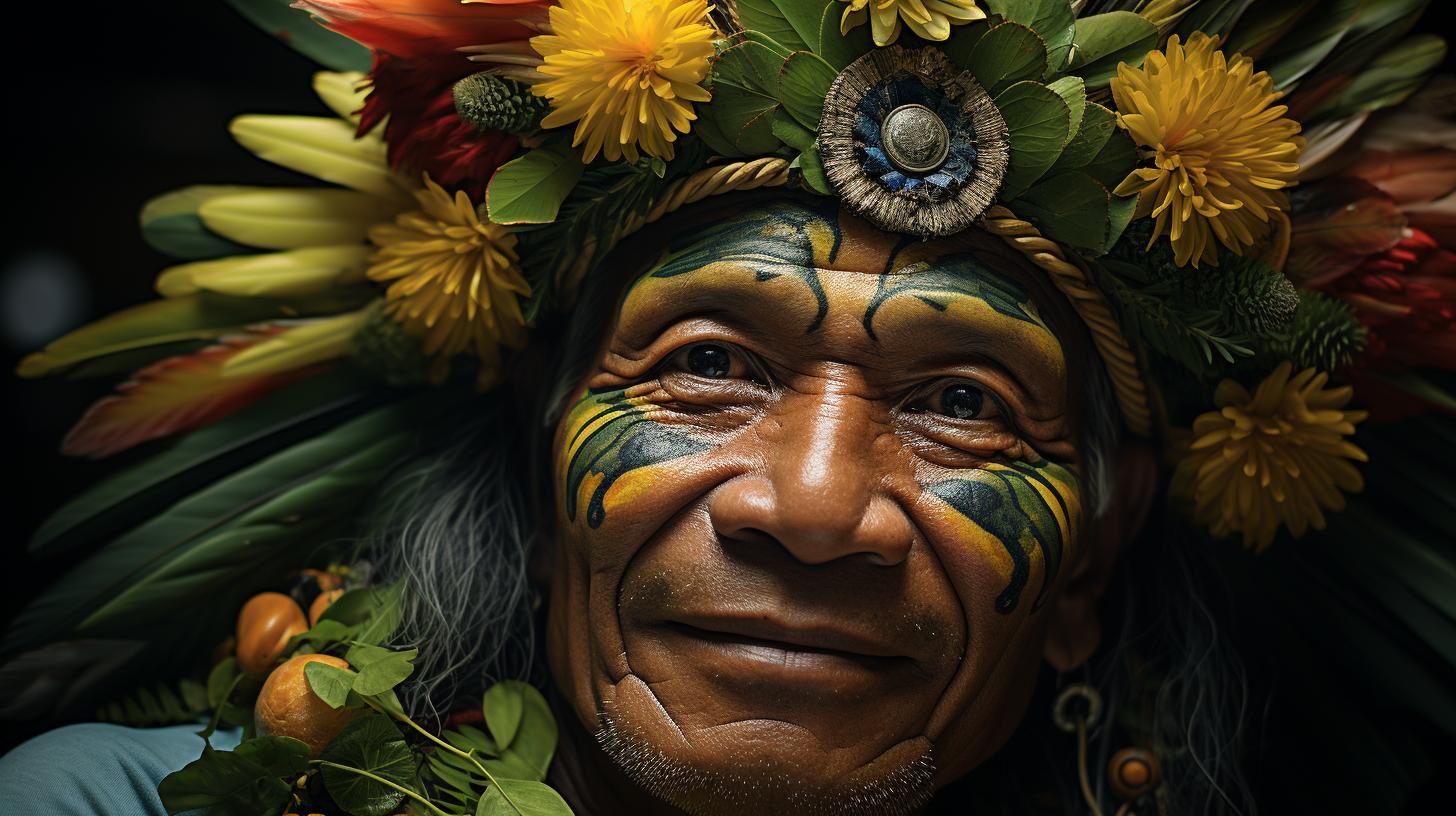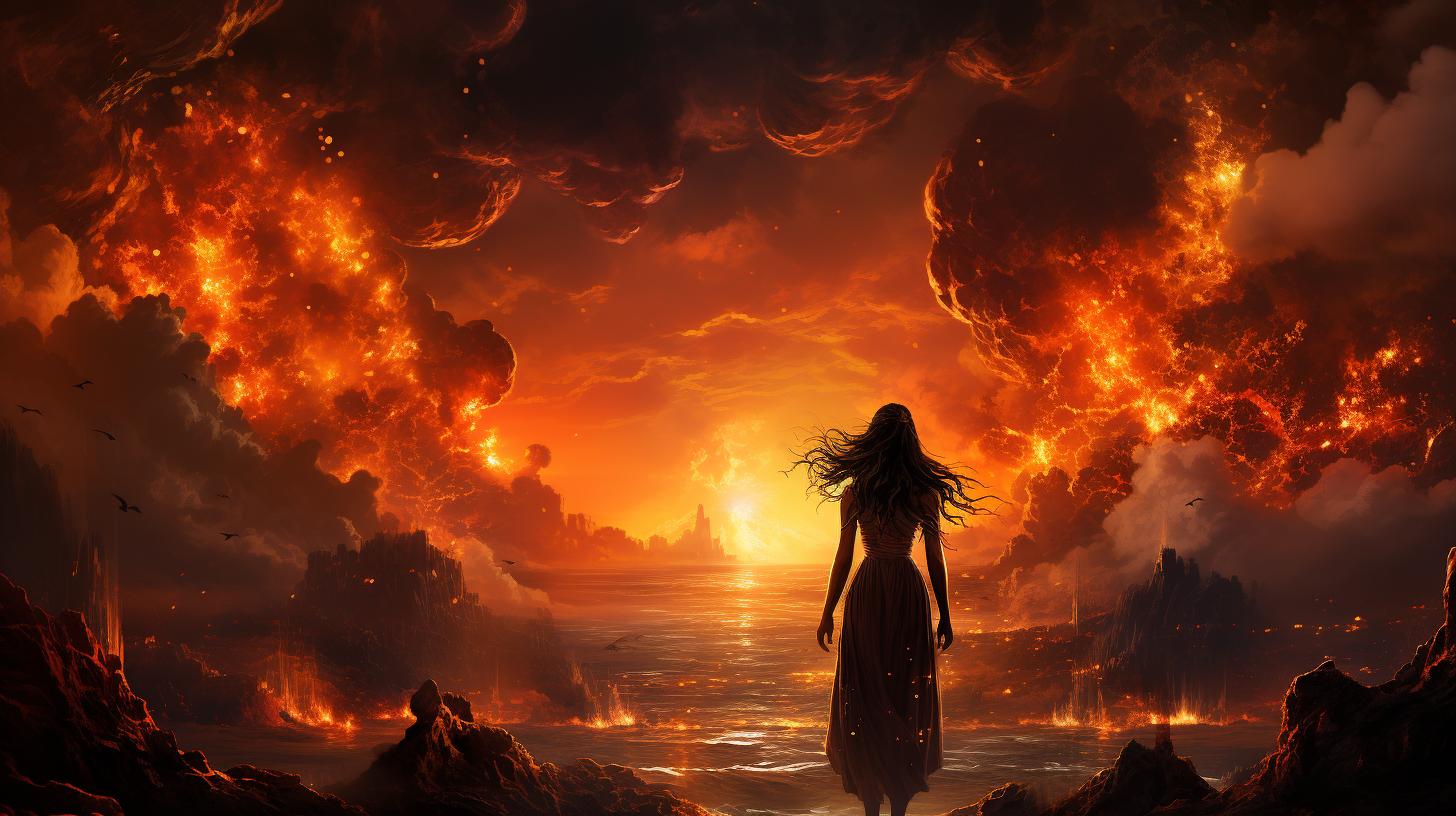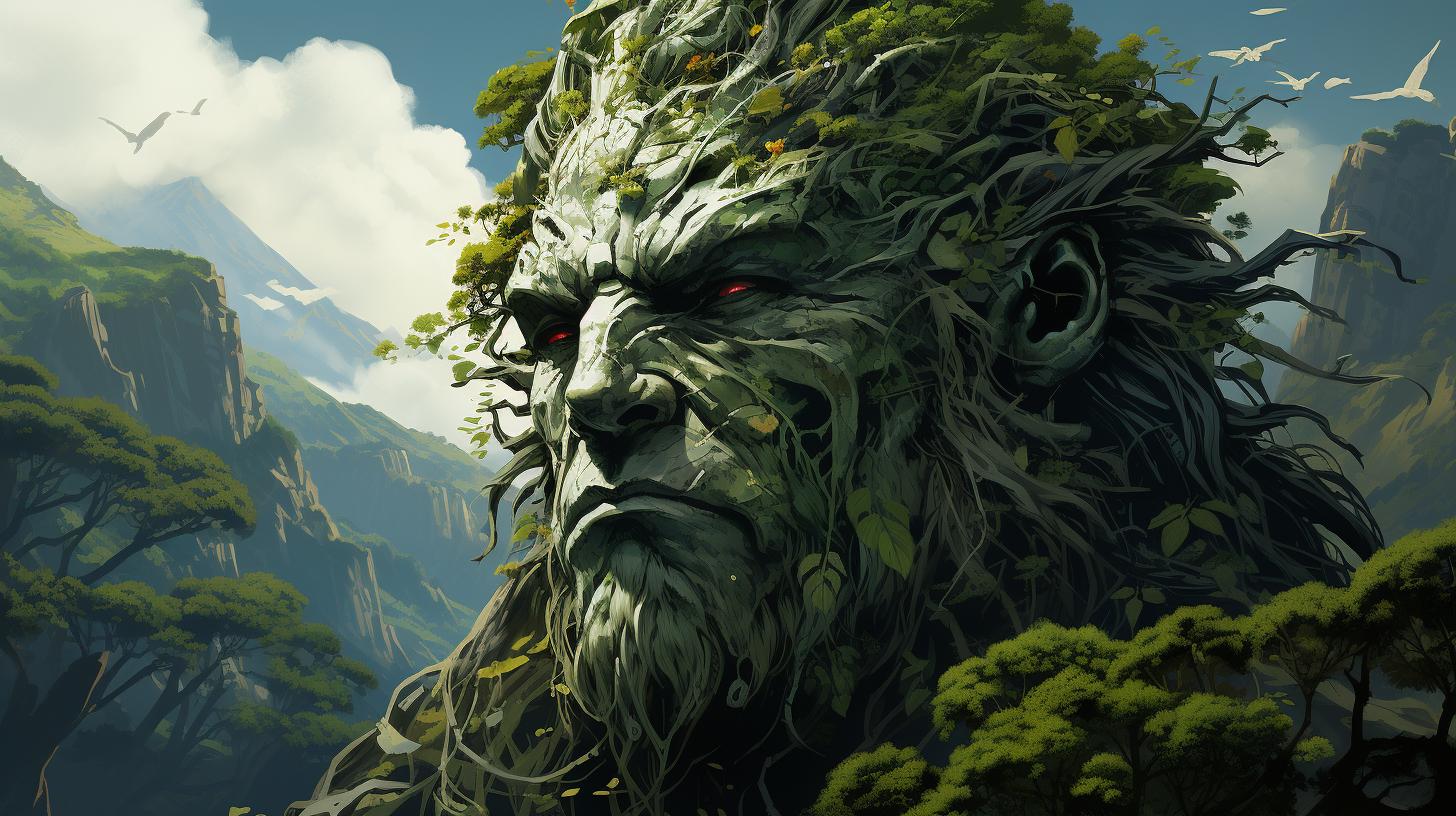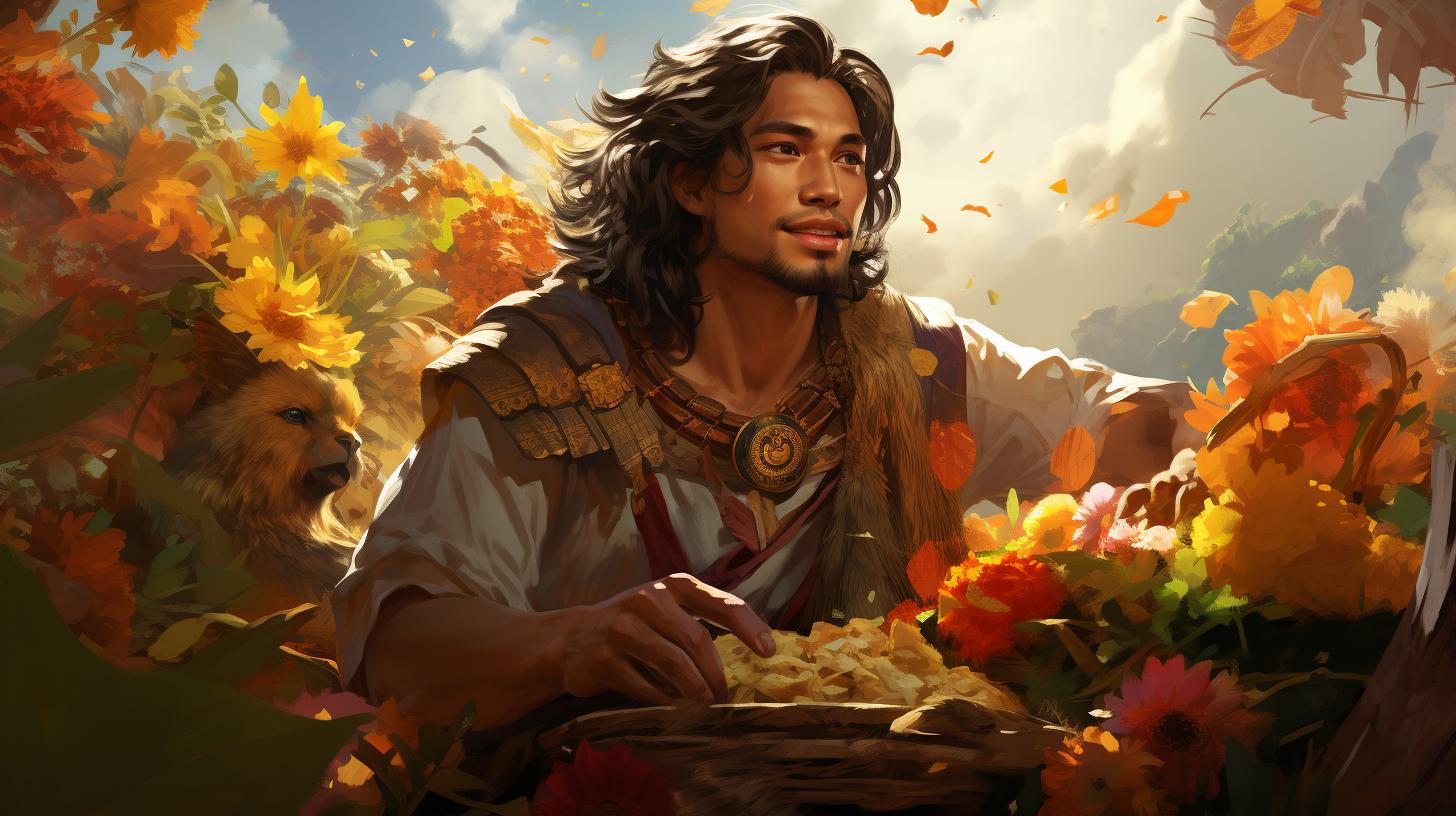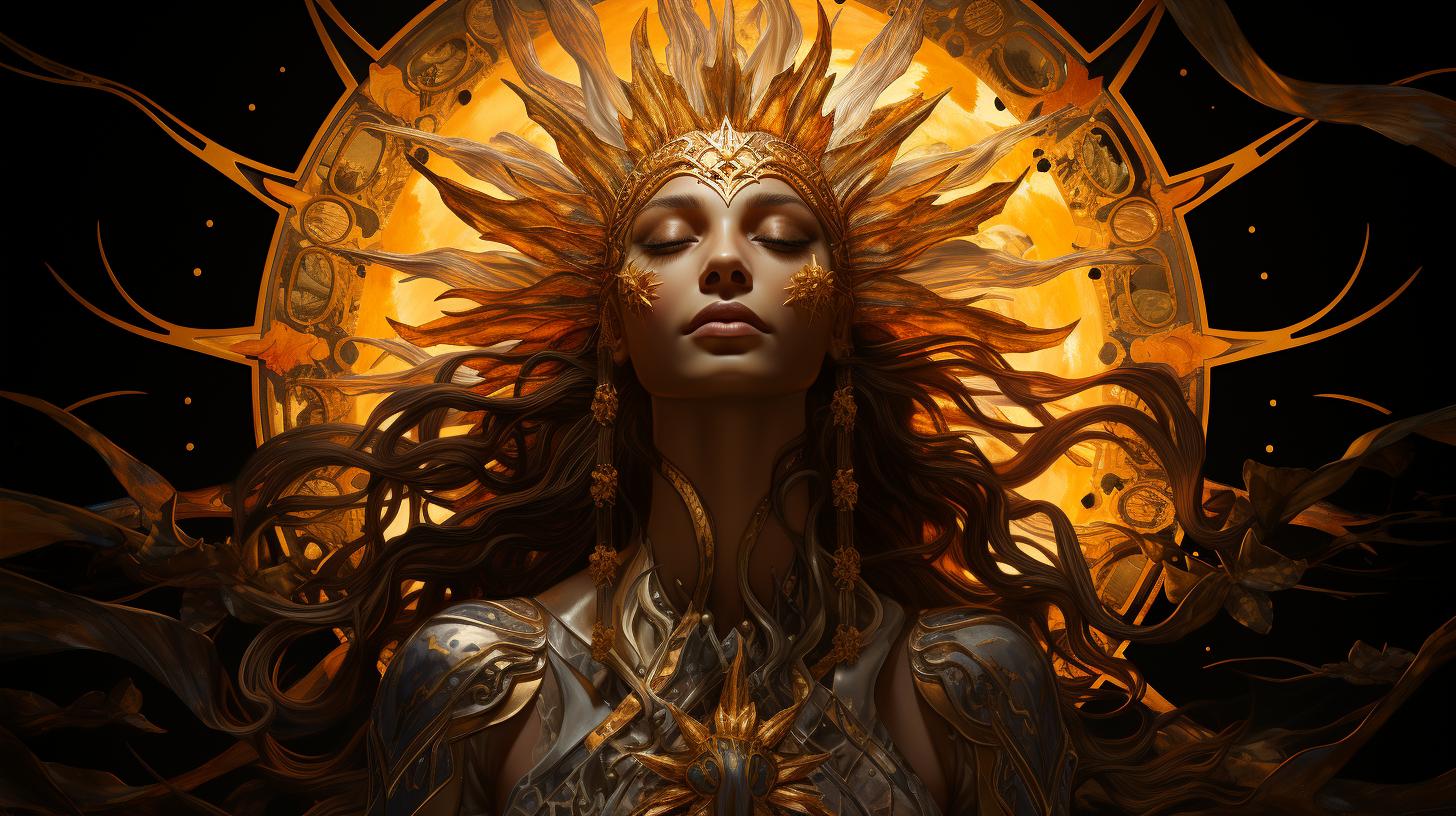Manama God: Unveiling the Mysteries of an Ancient Deity
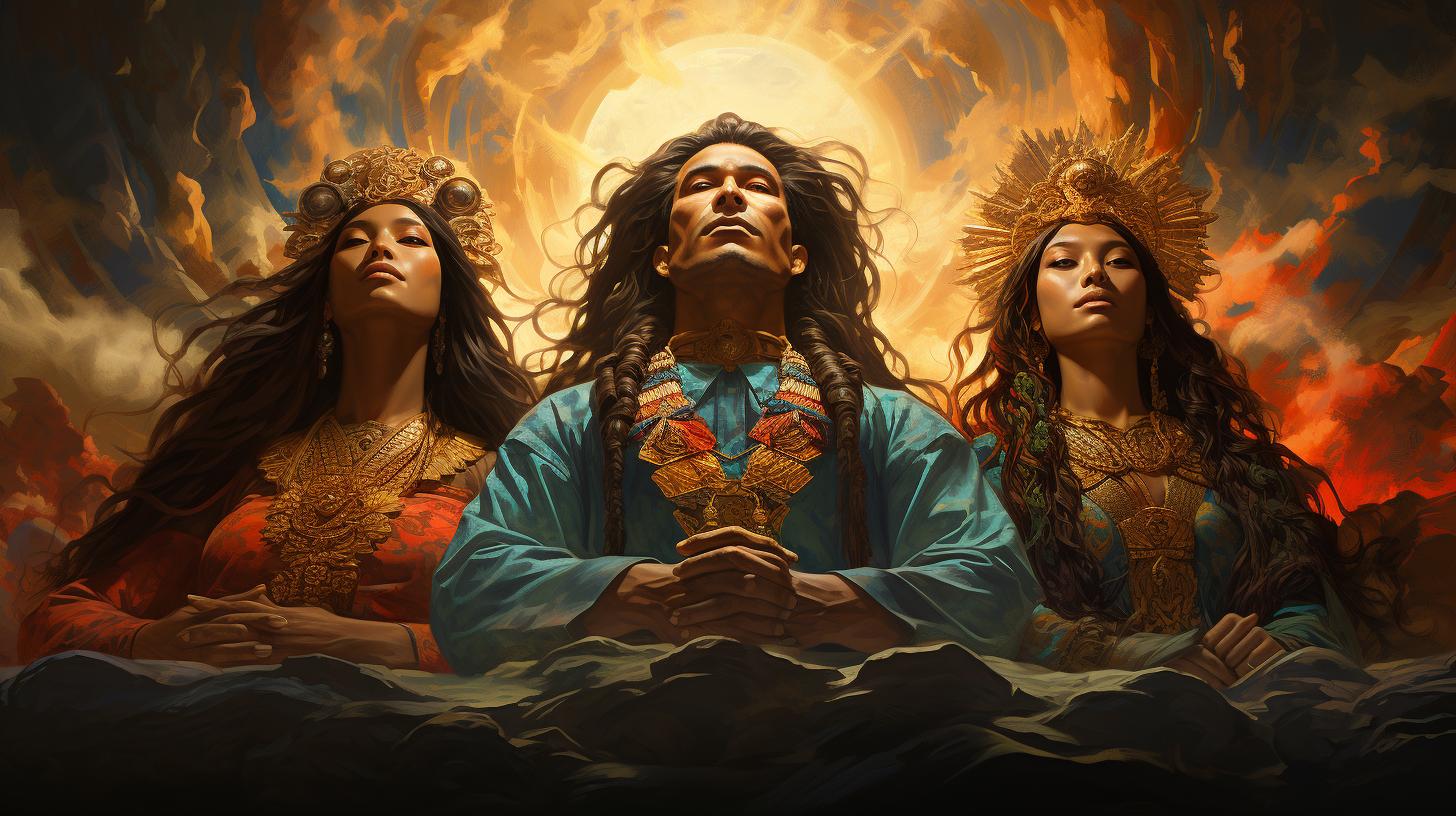
Manama God is an ancient deity deeply rooted in Philippine folklore and culture. With origins in Philippine mythological epics like the Ramayana and Mahabharta, Manama God holds significant symbolism and is surrounded by captivating legends.
Among the indigenous tribes of Davao District, Mindanao, rituals and ceremonies dedicated to Manama God are still practiced. This supreme deity also holds cultural significance among the wild tribes, such as the Tagalogs and Ata.
Today, Manama God continues to influence Philippine history and culture, with artifacts representing it showcased in the Field Museum, Chicago.
The Mythology of Manama God
The mythology of Manama God holds a significant place in Philippine folklore, encompassing a rich tapestry of origins, symbolism, and legends. Exploring the depths of this ancient deity’s mythology unveils a captivating narrative deeply embedded in the cultural fabric of the Philippines.
Origins of Manama God in Philippine Folklore
The origins of Manama God can be traced back to the Philippine folklore, where it emerged as a prominent figure in mythological tales and epics. Spanning centuries, this deity’s roots intertwine with the country’s diverse indigenous beliefs and traditions, giving rise to a captivating pantheon of gods and goddesses.
Symbolism and Significance of Manama God in Philippine Culture
Manama God holds profound symbolism and significance within Philippine culture. Representing various aspects of life, nature, and spirituality, this deity embodies values such as wisdom, strength, and protection. The symbolism associated with Manama God reverberates through religious rituals, artistic expressions, and communal practices across the archipelago.
Legends and Stories Surrounding Manama God
The mythology of Manama God is intricately woven with captivating legends and stories passed down through generations. These narratives recount epic battles, divine interventions, and heroic feats attributed to Manama God.
These tales not only entertain but also provide insights into the cultural heritage and values cherished by the Filipino people.
The Manama God in Philippine Folk Literature
The Manama God holds a significant place in Philippine folk literature, with its presence resonating in various epics, folk tales, and legends. The mythology surrounding this deity has deep roots in Philippine culture, showcasing its enduring influence.
Manama God in Epics: Ramayana and Mahabharta
The Manama God is intricately woven into the fabric of Philippine epics, such as the Ramayana and Mahabharta. These ancient narratives depict the adventures and struggles of heroes and mythical creatures, with the Manama God playing a crucial role in shaping the course of events.
Influence of Manama God in Philippine Folk Tales and Legends
Manama God’s influence extends beyond epics and encompasses a wide array of Philippine folk tales and legends. These stories often revolve around the Manama God’s interactions with humans, supernatural beings, and the natural world.
Its presence in these tales is symbolic of its power and significance in Philippine folklore.
The Role of Manama God in Philippine Mythological Epics
Within the context of Philippine mythological epics, the Manama God assumes different roles that are integral to the intricate plotlines. It serves as a deity bringing guidance, protection, and wisdom to the heroes and heroines, shaping their destinies and providing moral lessons for both the characters and the readers.
The Manama God’s role in Philippine folk literature is multifaceted, reflecting its profound influence in shaping narratives, imparting cultural values, and captivating the imaginations of generations of Filipinos.
Manama God in Davao District, Mindanao
Davao District, located in the southeastern part of Mindanao, holds significant cultural importance in relation to Manama God.
The indigenous tribes residing in this district have a deep-rooted connection with this deity, shaping their beliefs, traditions, and way of life. Let’s explore the role of Manama God within the indigenous tribes of Davao District, as well as the rituals and ceremonies dedicated to this revered deity.
Manama God and the Indigenous Tribes of Davao District
The Indigenous tribes of Davao District, such as the Bagobo, Mandaya, and Mansaka, have passed down their rich cultural heritage from generation to generation. Within their beliefs, Manama God holds a prominent place, representing a symbol of power, protection, and divine guidance.
This supreme deity is revered as the creator and caretaker of the land and its inhabitants, forming a spiritual bond between the indigenous tribes and nature.
Rituals and Ceremonies Dedicated to Manama God in Davao
In the Davao District, the indigenous tribes actively engage in rituals and ceremonies dedicated to Manama God. These sacred practices serve as a way to express reverence, seek blessings, and foster spiritual connection.
The rituals often involve offerings, prayers, music, dance, and storytelling, creating a vibrant tapestry of cultural expression. Through these rituals, the indigenous tribes honor and invoke the presence of Manama God in their lives, seeking guidance and protection.
Preservation Efforts and Cultural Significance of Manama God in Davao
Preservation of the cultural heritage surrounding Manama God is of paramount importance to the indigenous tribes of Davao District. Efforts are being made to pass down traditional knowledge, rituals, and beliefs related to this deity to future generations.
By ensuring the continuation of these cultural practices, the indigenous tribes aim to preserve the identity and unique traditions linked to Manama God. The reverence for Manama God not only strengthens the cultural fabric of Davao District but also fosters a sense of belonging and pride among its people.
The Supreme Deity: Manama God in Philippine Wild Tribes
Manama God and its Connection to the Tagalogs and Ata Tribes
The Tagalogs and Ata tribes of the Philippines hold a deep-rooted belief in the power and significance of Manama God.
This supreme deity is intricately connected to the spiritual and cultural fabric of these tribes. The Tagalogs perceive Manama God as a protector and provider, while the Ata tribe reveres it as a source of wisdom and divine guidance.
Through their rituals, ceremonies, and oral traditions, both tribes honor and pay homage to the omnipotent Manama God.
Beliefs and Practices Related to Manama God among the Wild Tribes
Among the wild tribes of the Philippines, including the Tagalogs and Ata, there are various beliefs and practices associated with Manama God.
The tribes believe that offering sacrifices to the deity guarantees blessings and protection. They also widely believe in the power of Manama God to bring good fortune, healing, and fertility. Rituals, such as animal sacrifices and prayers, play a significant role in connecting with this supreme deity and seeking its divine intervention in their daily lives.
Cultural Relationships between Manama God and Other Deities in the Philippines
Within the rich tapestry of Philippine mythology, Manama God shares a complex and interconnected relationship with other deities.
The wild tribes’ belief systems intertwine Manama God with deities like Bathala, the supreme god of the Tagalogs, and Diwata, the goddess of the Ata tribe. These divine connections showcase the depth of Philippine folklore and highlight the diverse ways in which different tribes interpret and venerate the Manama God.
Manama God: A Historical and Cultural Perspective
The historical and cultural significance of Manama God in the Philippines is a captivating exploration of its influence and adaptation over time. This perspective sheds light on the profound impact this deity has had on Philippine culture and history, as well as its striking relevance in modern times.
Manama God in the Philippine Islands: An Overview
Manama God holds a prominent place in the intricate tapestry of Philippine mythology and folklore. Across the enchanting Philippine islands, the presence of Manama God reverberates through ancient tales, rituals, and artistic expressions.
This section provides an overview of the deity’s historical presence throughout the archipelago, highlighting key regions and their unique interpretations of Manama God’s significance.
Influence of Manama God on Philippine Culture and History
The influence of Manama God on Philippine culture and history is profound and multi-faceted.
From its role in shaping religious beliefs to its impact on artistic creations, this deity has left an indelible mark on Philippine society. Delve into a compelling exploration of the ways in which Manama God has shaped and influenced the cultural fabric of the Philippines over the centuries.
Manama God in Modern Times: Impact and Adaptation
Even in modern times, the omnipresence of Manama God continues to be felt and adapted to contemporary contexts. Discover how this ancient deity has evolved and adapted to the changing socio-cultural landscape of the Philippines.
From adaptations in popular culture to its continued significance in traditional rituals and practices, explore the ongoing impact of Manama God in the present day.
Through an exploration of the historical and cultural perspective surrounding Manama God, it becomes evident that this deity’s influence has transcended time, leaving an enduring legacy in Philippine society.
Its presence in the past, present, and undoubtedly the future, solidifies the significance of Manama God within the rich tapestry of Philippine mythology and cultural heritage.
The Representation of Manama God in the Field Museum, Chicago
The Manama God artifacts have found their home in the prominent Field Museum located in Chicago.
This museum has a rich collection that showcases the diverse cultural heritage of different civilizations, and the Manama God holds a significant place among them.
History and Discovery of Manama God’s Artifacts
The history behind the discovery of the Manama God artifacts is fascinating.
These ancient artifacts were unearthed during archaeological excavations in the Philippine Islands. They provide invaluable insights into the beliefs, rituals, and customs associated with the worship of Manama God in the ancient Philippine society.
The artifacts date back centuries, and their preservation and study have contributed greatly to the understanding of Philippine history and culture.
Exhibits and Collections Depicting Manama God in the Field Museum
Within the Field Museum, a dedicated section showcases the exhibits and collections that depict the Manama God.
Visitors can explore a variety of artifacts, including intricately crafted statues, ceremonial objects, and ancient manuscripts. Each exhibit offers a glimpse into the profound symbolism and cultural significance attributed to the Manama God, offering visitors a unique opportunity to appreciate the depth of Philippine mythology and folklore.
Cultural and Educational Significance of Manama God’s Display in Chicago
The display of Manama God’s artifacts in the Field Museum serves both cultural and educational purposes. Visitors can delve into the rich heritage of the Philippine Islands, understanding the beliefs and practices of ancient civilizations through the lens of the Manama God.
The exhibition also fosters cross-cultural appreciation and understanding, allowing visitors from different backgrounds to explore and embrace the diversity of human culture. Additionally, the educational programs and resources provided alongside the exhibition contribute to the dissemination of knowledge about Philippine mythology, history, and the significance of the Manama God in shaping the cultural identity of the region.
Overall, the representation of the Manama God in the Field Museum, Chicago, offers a captivating exploration of Philippine folklore, providing a unique and enlightening experience for visitors seeking to immerse themselves in the cultural tapestry of the Philippine Islands.
.

